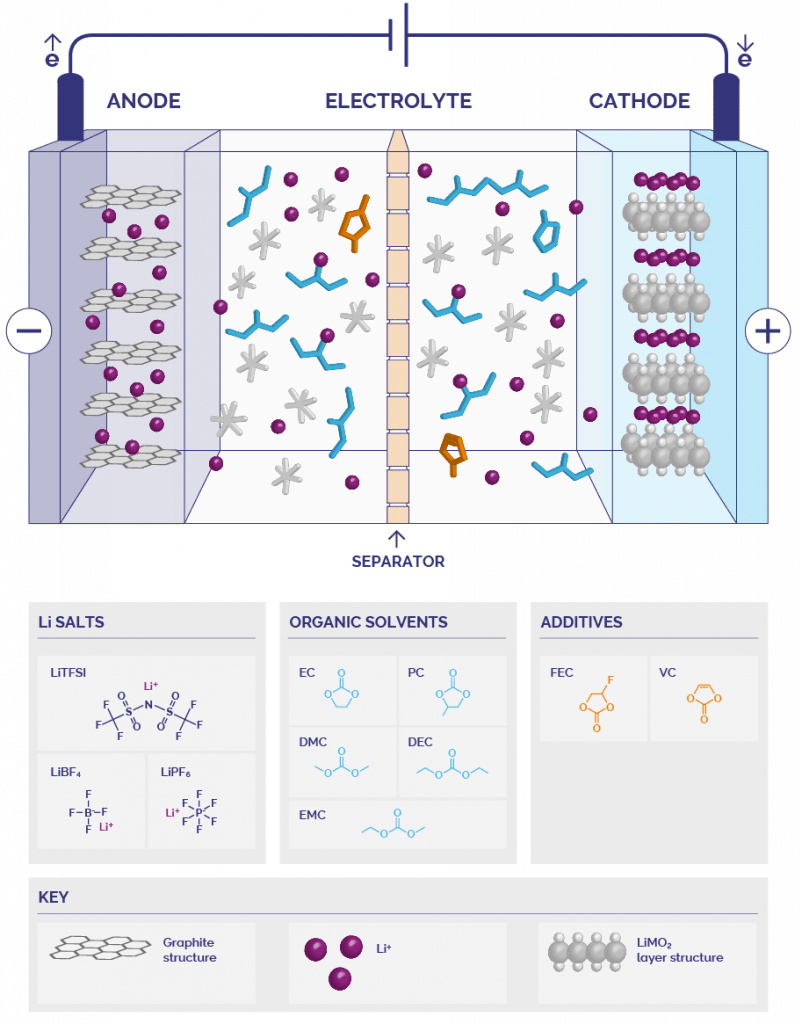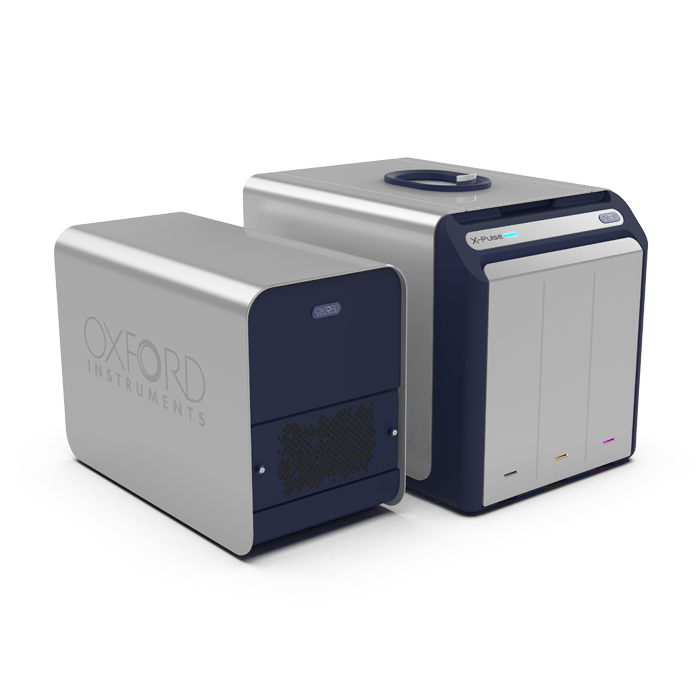Benchtop NMR is an ideal technique for research into battery technology, battery materials and quality control of battery raw materials. With the ability to quantify key material concentrations in minutes, we can rapidly gain an understanding of factors affecting performance and properties of electrolytes. This information can be highly beneficial in accelerating development programs and ensuring optimal quality of final products in manufacturing.

The X-Pulse Broadband Benchtop NMR
The X-Pulse broadband benchtop NMR is a powerful instrument with a wide range of application pertaining to battery technology. This benchtop system supersedes the massive systems that used to require highly skilled operators and can perform the same high-field NMR experiments at a fraction of the cost.
The unique X-Pulse benchtop NMR spectrometer can resolve complex proton spectra at 60MHz field strength thanks to its better than 0.35Hz spectral resolution at the half-height of a peak.
It is the only benchtop NMR instrument with built-in broadband multinuclear capability. This capability allows users to collect spectra from the wide range of nuclei present in electrolytes, including carbon, hydrogen, sodium, boron, phosphorus, fluorine, and lithium. The temperature of the sample can be kept in the typical operating conditions for most batteries, between 20°C to 60°C.
Using NMR for Battery Electrolyte Analysis
Batteries typically have a cathode and anode separated by an electrolyte such as a lithium salt e.g. TFSI ((bis(trifluromethanesulfonyl)imide)), lithium tetrafluoroborate, and lithium hexafluorophosphate.

The salt is dissolved in an organic solvent such as dimethyl carbonate and ethylene carbonate. Electrolyte performance can be enhanced using additives which improve the formation of a solid electrolyte interface layer at the electrodes or enhance their stability to prevent decomposition.
NMR help the understanding of battery performance by:
- Quantifying the salt or additive concentration in electrolytes to better understand energy density and to develop higher power density formulations
- Measuring the transference numbers of those electrolytes and ionic conductivity by determining the diffusion coefficients of the various species in the electrolytes
- Verifying raw materials purity to benchmark electrolytes
- Monitoring electrolyte breakdown reactions to better understand their processes which directly affects lifespan
NMR in Battery Quality Control
This scenario is best illustrated using a case study where benchtop NMR is used to test solvent composition to assess electrolytes, in this case two colourless liquids. The two liquids were supposed to have the same performance and chemistry i.e. a combination of ethyl methyl carbonate and ethylene carbonate, and lithium hexafluorophosphate.
Using a hydrogen spectrum, the samples showed peaks associated with ethyl methyl carbonate and ethylene carbonate, as well as a small peak attributed to vinylene carbonate (a stabilizing agent) and both produced similar spectra, i.e. no sign of performance differences.
Then a fluorine spectrum was collected to understand the electrolyte anion coming from the hexafluorophosphate lithium salt. One sample displayed a clear doublet that was attributed to coupling of the fluorines to the phosphorus in the hexafluorophosphate which was causing a doublet on the coupled spectrum to appear.
At a different frequency, a different doublet was observed caused by decomposition. This indicated that the difference in performance was most likely due to a breakdown of the salt through a common hydrolysis reaction.
With this knowledge the client was able to take remedial action and address their battery performance issues.
Understanding Decomposition Mechanisms Leads to Longer Battery Life
Electrolytes such as carbonated solvents, tetraborate salts, and lithium hexafluorophosphate decompose in different ways. Using benchtop NMR the decomposition mechanisms can be identified and monitored and the presence of all decomposition products quantified at regular intervals. This knowledge enables better management of the decomposition.
Developing New Liquid Electrolytes using Pulsed-Field Gradient NMR
The performance of an electrolyte when placed into a cell can be predicted by measuring amount of charge carried by a particular ion species (also known as the transference number), as well as the diffusion coefficient of the different ion species. Pulsed-field gradient spin echo NMR sequences can be used to measure these properties.
By exciting the sample with a typical 90-degree pulse and then applying a gradient pulse across that sample, a change of phase across the sample can be stimulated. If there was no diffusion, applying a second 180-degree pulse and an additional gradient pulse would allow us to see the same signal that we had previously.
By looking to see if there is a decrease in the signal intensity dependent on the molecular diffusion coefficients and the strength of that gradient pulse and if molecules in our solution were to diffuse over the time between those two gradient pulses, the diffusion co-efficient of the specific species in the solution can be determined using hydrogen with broadband NMR.
From here, the ionic conductivity of the cation transference and the electrolyte can be calculated which are important parameters to know when developing new electrolytes for battery materials.
Furthermore, NMR also allows us to understand how the breakdown process affects diffusion by using measurements on electrolytes at different stages of decomposition.
Summary
These technologies are key in the fight against climate change via such things as zero emission vehicles using technologies beyond Li-ion batteries, such as lithium-air batteries.
Oxford Instruments are committed to supporting this work and have collaborated with Oxford University and the Henry Royce Institute. Together they are looking to accelerate research on future battery technologies by using benchtop Nuclear Magnetic Resonance (NMR) to develop new methods to monitor reactions in battery cells and use this understanding to enhance their performance.

